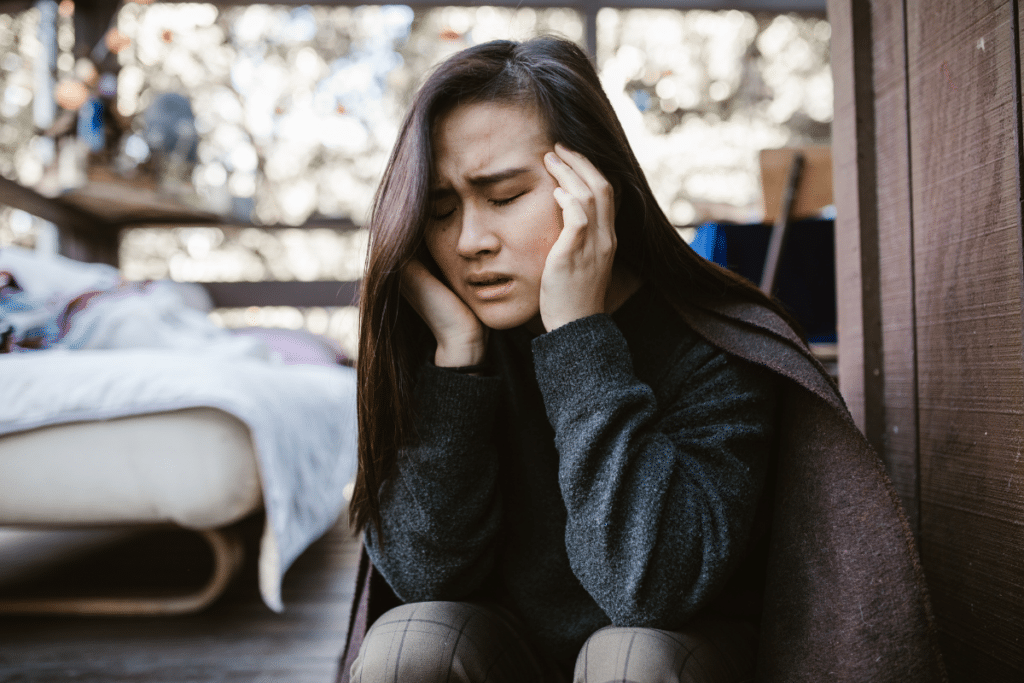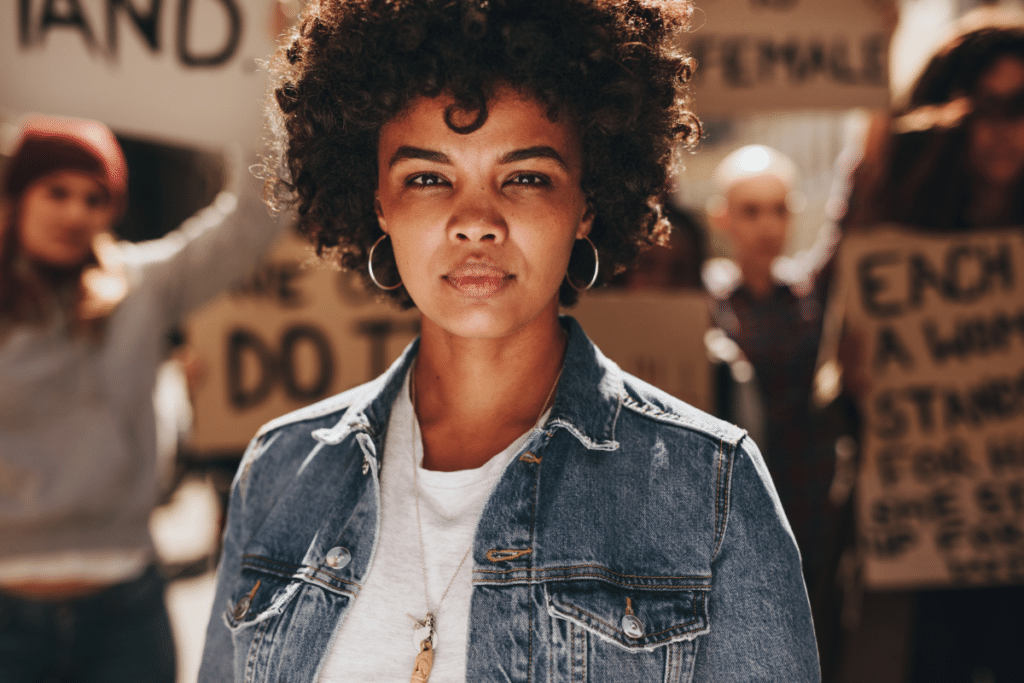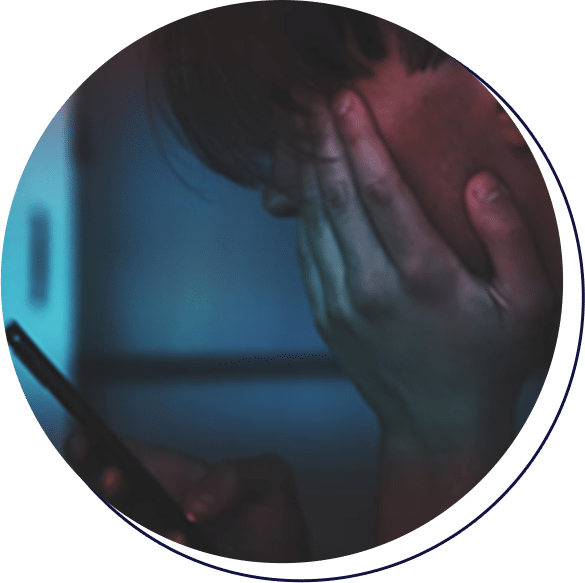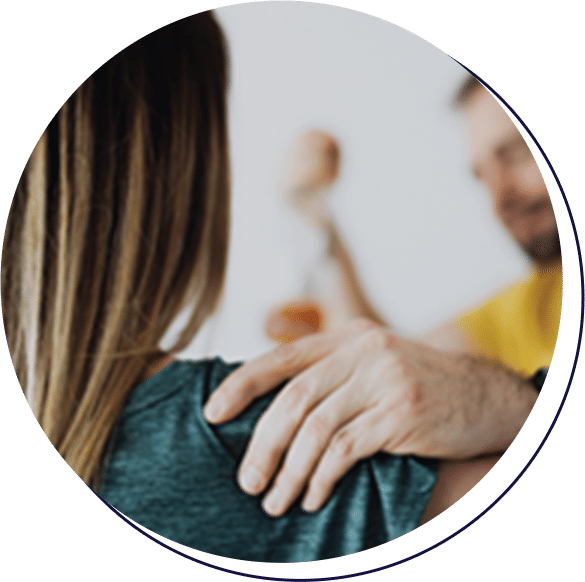Social Media and Sexual Assault
Social media use is a huge part of everyday life for most teens today. A Pew Research Center survey on U.S. teens, social media, and technology revealed that 97% of kids aged 13–17 use a social media platform. Some 45% of the respondents said they are “online constantly,” with 85% of those using YouTube, 72% on Instagram, and 69% on Snapchat and TikTok.
 Written and edited by our team of expert legal content writers and reviewed and approved by Attorney Matthew Bergman
Written and edited by our team of expert legal content writers and reviewed and approved by Attorney Matthew Bergman
- Content last updated on:
- October 2, 2025
Written and edited by our team of expert legal content writers and reviewed and approved by

- Content last updated on:
- October 2, 2025
What You’ll Learn
- What is sexual assault?
- How big is the problem?
- Link Between Social Media and Sex and Sexual Assault
- How Social Media Reinforces Rape Culture
- Is my teen at risk of online sexual assault?
- Signs of Sexual Assault
- Effects of Sexual Assault on Teenagers
- Preventing Sexual Assault for Your Kids
- Social Media Use to Bring Awareness to Sexual Assault
- Reporting Online Sexual Assault
Unfortunately, the rise of social media use among teens has been associated with a more challenging, and even dangerous, environment in which to raise a child. Some social media incidents fall squarely on the extreme end of cyberbullying and sexual exploitation.
Sexual harassment on social media platforms has become commonplace. Another Pew survey found that 33% of women under 35 say they have experienced sexual assault online. And 11% of men under 35 reported the same.
The numbers are worse for minority groups, including those who identify as lesbian, gay, or bisexual. Nearly seven in every ten say they have been targets of sexual harassment on social media platforms.
What is sexual assault?
According to the U.S. Department of Justice, “sexual assault” refers to any sexual act or behavior without explicit consent as prescribed by federal, tribal, or state law.
Sexual assault also includes situations in which the victim lacks the capacity to consent. This includes people, specifically teens, who don’t fully comprehend, cannot give full consent, or aren’t developmentally prepared to process the sexual act.
Non-consensual sexual activity has profound lifelong impacts on physical, mental, and emotional health.
How big is the problem?
Child sexual abuse is a worrisome public health problem in America. The Centers for Disease Control and Prevention estimate that one in every four girls and one in every 13 boys experience some form of sexual assault at some point in their childhood.
Victims are often related to their sexual violence perpetrators, with 91% of sexual abuse perpetrators known to the victim or their family.
The incidents also begin early. One in three female rape victims experiences sexual violence for the first time between ages of 11 and 17. One in eight victims says the non-consensual acts occurred before age 10. A quarter of male respondents say the sexual acts began between ages 11 and 17.
Young women are often at a greater risk. Reports say 82% of all juvenile victims are female. Teenage girls aged 16 to 19 are four times more likely than the general population to become victims of sexual assault.
Link Between Social Media and Sex and Sexual Assault
The Steubenville High School rape case in 2013 sparked national outrage. Prosecutors said a teen girl, dragged unconscious, was repeatedly assaulted, with the photos of the ordeal circulated across school email and YouTube.
The case provides context on the extremes of social media-perpetrated sexual offenses. Headlines of perpetrators luring their victims before streaming their assault on social media platforms are becoming more commonplace.
Hypersexualization on social media platforms can ultimately lead to sexual harassment for adolescents online.
Sexual abuse on social media platforms may take various forms, including:
- Threatening to distribute or actually distributing intimate or sexual images of a victim without their consent
- Sending unrequested nude images
- Pressuring a victim to send sexually explicit images, emails, chats, or texts
- Sharing unsolicited pornographic images or videos with a victim
- Taking sexually explicit content of the victim without their consent
A survey by Nancy Jo Sales for her book American Girls: Social Media and the Secret Lives of Teenagers showed most teenage girls receive unrequested nude or semi-nude pictures. These adolescents are also subject to unwanted requests for sexual text messages, also known as “sexts.”
How Social Media Reinforces Rape Culture
Experts define rape culture as the perpetuation of a belief that the victims of sexual abuse contributed to their victimizations, and are thus responsible for the abuse. This falsified belief justifies sexual aggression and trivializes the severity of the assault.
For the Steubenville rape case, Twitter and YouTube platforms served as weapons against the victim. The images and a 12-minute video of a naked girl passing out attracted a huge audience that proceeded to troll the victim.
Additionally, bystanders who watch or stream the live feeds without reporting the crimes continue to propagate rape culture. Without the help of witnesses, victims suffer shame, doubt, and harassment.
Reinforcing rape culture on social media has significant effects, and may contribute to a lack of reporting crimes. Only one in every three of all rape cases gets reported. Of these, fewer than 40% appear before a judge or jury.
Teenagers may have a harder time reporting online sexual assault, fearing verbal repercussions from strangers.
Is my teen at risk of online sexual assault?
The ages of 12 to 24 have the highest risk of rape or sexual violence. Female adolescents are four times more likely to suffer sexual assault. As a parent, you can learn ways to gauge the risk of sexual abuse for your teenage daughter or son.
Social media access can increase your child’s risk of experiencing sexual violence. While the internet provides significantly greater access to educational materials, it also provides avenues for perpetrators to try and take advantage of your child.
Anonymity through pseudo accounts and fake profiles can become gateways for perpetrators to communicate with your child. Isolating and targeting a victim is easier online than physical interaction.
Parents need to understand how various social media platforms work and watch out for unmonitored access to online devices and platforms. It’s wise to keep tabs on your teenager’s computer access, emails, and social media profiles.
Signs of Sexual Assault
Teenagers often struggle with an identity crisis as they learn to relate to their changing bodies, peers, and environment. It can become challenging for a parent to separate warning signs about their child’s sexual abuse from their everyday struggles.
Your child may not tell you about their sexual ordeal. Instead, you may gradually note physical, emotional, and behavioral changes, indicating all is not well.
As a rule of thumb, it’s better to question your child and be wrong than to ignore the effects of sexual assault. Here’s a list of warning signs that indicate you may need to reach out to your teen.
Emotional signs include:
- Aggressiveness and anger for no apparent reason
- Marked sadness
- Getting upset when you mention a particular person or place
- Crying without any apparent reason
- Nightmares
- A drastic change in their self-esteem
- Confusion over their sexual identity
- Anxiety or panic attacks
Changes in behavior can also be a sign of sexual assault, including:
- Dressing differently
- Receiving gifts, clothes, jewelry, or electronics from an unknown source
- Using drugs
- Driving erratically
- Eating less or more
- Sleeping problems
- Self-harming activities
- Increasingly risky sexual behavior
- Changing friendship groups
- Avoiding particular individuals or places
- Performing poorly in school
- Skipping self-care routines
Finally, changes in physical health may be signs of an assault, including:
- Symptoms of sexually transmitted diseases
- Swelling or redness on the genitals
- Difficulty sitting or walking
- Unexplained bruises or tears on their skin
- Missed periods
- Insomnia
Conversations about sexual assault can make it easier for your teenager to open up about their experience. In addition, you should pay attention to your child’s relationships, which may open up an avenue for abuse and manipulation.
Check for these warning signs in your teenager’s partner:
- Trying to engage your child in sexual acts they’re not ready for
- Physical abuse with threats to control your teenager’s actions
- Coercing your child into unwanted sexual behavior
- Using alcohol or drugs, which leads to impaired judgment
By maintaining awareness, you can help protect your teen.

Effects of Sexual Assault on Teenagers
Reactions to sexual violence vary significantly, and no two acts of sexual abuse are precisely the same. There’s no right or wrong way to feel and react.
The effects can be immediate psychological consequences or drawn-out chronic issues that the victim lives with for decades. One in every three sexually assaulted kids does not display any signs deemed problematic or beyond a clinical threshold.
That said, here are some common effects of sexual abuse on your teenager:
- Post-traumatic stress disorder (PTSD)
- Neurobiological changes
- Depressive symptoms
- Eating disorders
- Strained relationships with friends and family
- Social isolation or loneliness
- Difficulty in trusting other people
- Amnesia
- Dissociation from the sexually abusive act
- Unhealthy coping behaviors
Some of the effects are more prevalent and more destructive than the rest. Here’s a more in-depth look at some of them.
Depression
Suicidal or depressive thoughts increase drastically after sexual assault. Some 94% of women who experienced rape develop symptoms of post-traumatic stress disorder within two weeks of the incident.
Additionally, one in every three rape victims contemplates suicide. Statistics show 13% of these victims make an attempt to kill themselves, and 70% of sexual abuse victims suffer from moderate to severe distress after the incident.
Your child may develop PTSD-like symptoms as a way to process their feelings about the incident. The response can disrupt their schooling and every aspect of their lives.
Drug Use
According to the National Victim Center, sexual assault victims are more likely to misuse drugs than the general public. Individuals who experience sexual harassment are 3.4 times more likely to use marijuana and six times more likely to use cocaine.
Disrupted Relationships
The solitude of victimhood may cause frequent anger bursts that strain your relationship with your child. Studies show that 37% of victims get into unnecessary arguments with family or friends more frequently than before.
Additionally, 79% of children victimized by a close family member experience severe distress. And, 38% of victims experience school problems that include significant issues with their peers.
Pregnancy and Sexually Transmitted Infections
Victims of sexual violence are also at a higher risk of pregnancy or sexually transmitted infections. Children victimized through rape have a higher risk of contracting sexually transmitted infections, such as gonorrhea, chlamydia, and syphilis.
The Department of Justice estimates the average number of sexual assaults on females of childbearing age is nearly 250,000. With one-time, unprotected sexual intercourse having a 3–5% chance of pregnancy, the number of children conceived from rape is approximately 32,000 annually.
Preventing Sexual Assault for Your Kids
Parents and guardians need to take measures that protect their kids from sexual assault. The first step may be to learn how social media platforms work. Moreover, parents should know how kids use these sites and apps.
Here are several steps that you can take to prevent sexual abuse online for your teen:
- Engage your child in ongoing conversations about the online world, safety precautions, and personal privacy
- Educate your child on the dangers of cyberbullying and sexting, which lead to online solicitation
- Work with your child to establish the appropriate privacy settings for their social media accounts
- Set privacy controls to monitor your child’s online activities to root out any perpetrators who may try to prey on them
- Encourage your teenager to purchase items from reputable online companies while monitoring any orders placed on their social media accounts
- Emphasize your teen needs to seek consent from their partner
To protect your teenager, consider enrolling them in sexual assault awareness workshops that can prepare and educate them about how to reject unsolicited nude content.

Social Media Use to Bring Awareness to Sexual Assault
Popular social media platforms such as Facebook, Instagram, Twitter, TikTok, and Snapchat allow you to share pieces of your life with the outside world. Despite its shortcomings, social media provides an excellent platform to raise awareness about serious issues, such as sexual abuse.
Online movements like #MeToo can help educate your teen on sexual violations and consent. Victims sharing their experiences can help the general public grasp the full extent of the damage done by non-consensual sexual acts.
Engaging your teen in such movements can help you raise awareness of the dangers of sexual abuse online and how to avoid it.
Reporting Online Sexual Assault
If you have reason to believe your teen has been sexually assaulted online, contact your local law enforcement to report the incident. Be prepared to show proof in the form of screenshots, text messages, or other tangible evidence.
You can also access the Cyber Tip Line at 1-800-843-5678, 24 hours a day, 7 days a week. Other helpful organizations include:
- National Children’s Advocacy Center
- Rape, Abuse & Incest National Network (RAINN)
- National Center for Victims of Crime
- Polaris National Human Trafficking Hotline: Call 1-888-373-7888 or text BeFree to 233733
- National Suicide Prevention Lifeline: Call 1-800-273-8255
For more information about social media and sexual assault, or if your teen has been sexually assaulted, solicited, or exploited online, contact the Social Media Victims Law Center to learn more about how we can help.
Frequently Asked Questions
For individuals and children who have been
We only handle cases on a contingent fee basis. This means that we are paid a portion of any recovery obtained in the case and you do not owe us any attorneys’ fees if the lawsuit does not result in a recovery.
Every case is unique. Our attorneys will work with your family to evaluate your potential case and help you evaluate whether filing a lawsuit or other legal proceeding is in your family’s best interest. Generally speaking, the types of cases we handle involve serious mental health effects, including attempted or completed suicide, eating disorders, inpatient mental health treatment, or sexual trafficking/exploitation that was caused by or contributed to through addictive or problematic social media use by teens and young adults.
We are a law firm based near Seattle, WA comprised of lawyers who have spent their entire careers representing victims who have been harmed by dangerous products. We are also parents. Shocked and troubled by the recent revelations about the harm caused to teens and young adults by social media platforms, which powerful technology companies have designed to be highly addictive, Social Media Victims Law Center was launched specifically to help families and children who have suffered serious mental harm or exploitation through social media use to obtain justice.
Contact Us Today
Related Pages
Client Testimonials
Explore Popular Topics

Addiction

Suicide

Eating Disorders

Anxiety

Bullying

Sexual Abuse

Body Image

